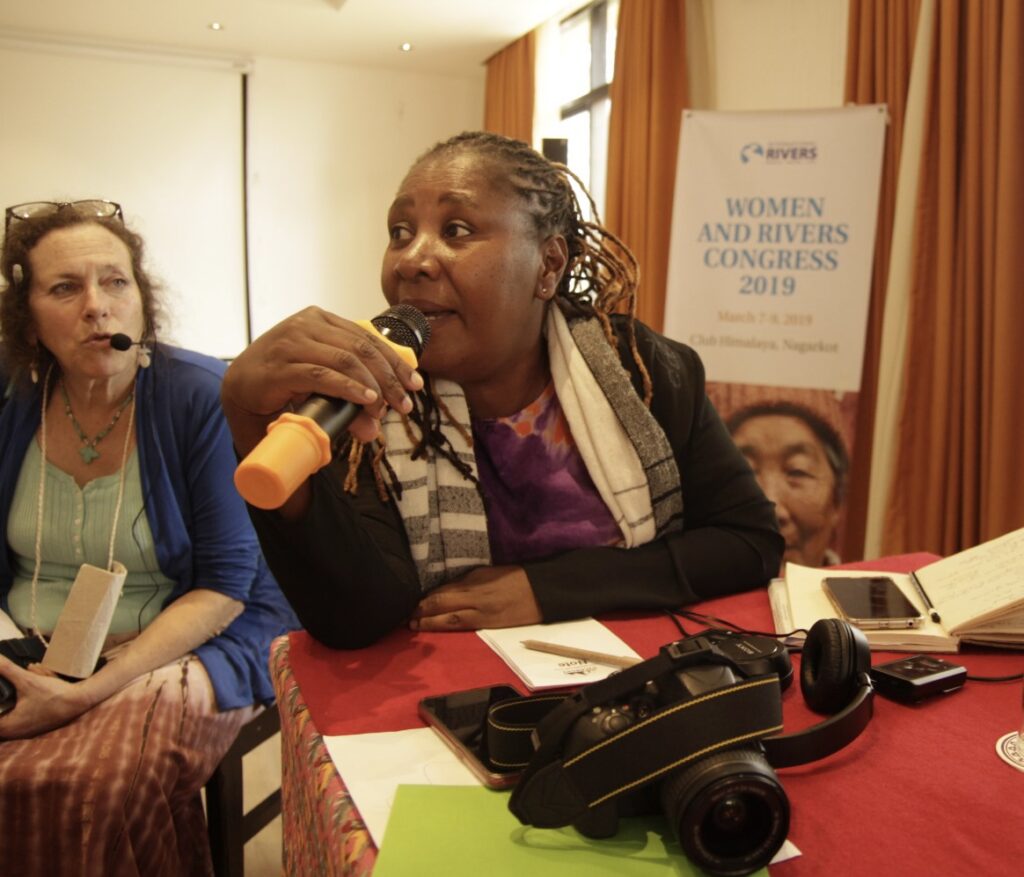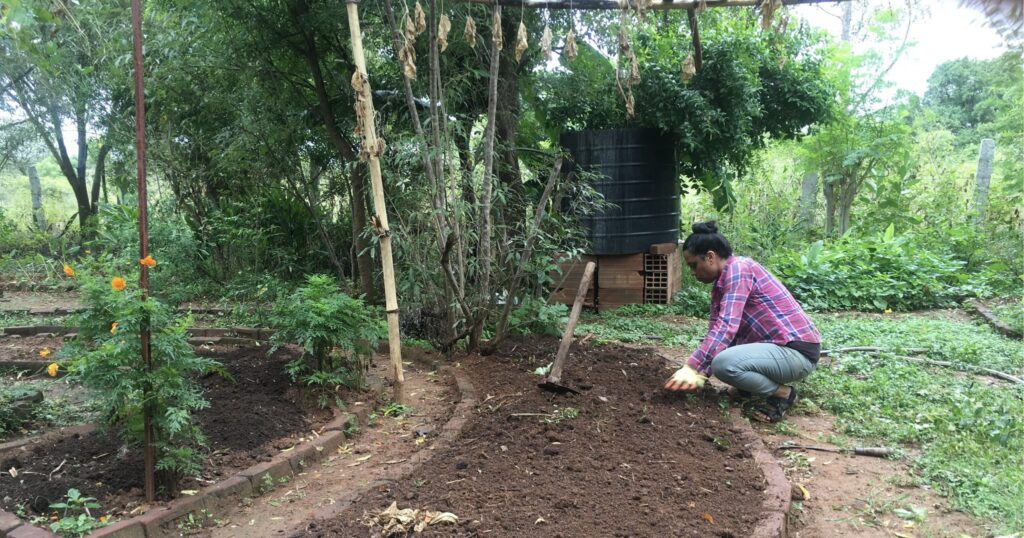Three thousand miles apart, Nirmala’s and Violet’s experience led them both to the same calling: to protect the rivers in their communities.

Growing up on a farm in rural Kenya without electricity, Violet Matiru developed a love of nature and the drive to fight its degradation early on. She began her environmental work with elephant conservation, but quickly became disenchanted with the colonial approach that left no place for Indigenous communities that steward wildlife, less so for Indigenous women. She then worked in international environmental advocacy, but here too, she came up against a wall. “Governments would use the same loopholes to advance their own interests at the cost of communities,” she told International Rivers. “We would start asking ourselves, ‘How are these international policies really converting or changing the lives of people like my mother who is still cooking the same way with the three stones?’” Together with partners, she started a community-based advocacy organization. It was then that she discovered that the common thread of most of the issues was water–its availability, its quality, and access–and the solution was to protect the rivers.
Three thousand miles away in Bengaluru, India, Nirmala Gowda found herself asking, “Where did the water go?” She had acquired eight acres of land with dreams of farming coconut, only to find that there was no groundwater at all–neither for irrigation nor for drinking. All of it had disappeared due to extreme overexploitation. Others might have lamented buying a wasteland, but Nirmala looked for solutions. As she explains in a taped talk to Azim Premji University, “When it rained in the farm, I would literally walk in a rain jacket saying, ‘Where does the water flow; where does it pool?’” Applying research and common sense, Nirmala built a catchment pond to recharge the groundwater. Yet all of her efforts provided only temporary solutions. Nirmala realized that the water scarcity she faced on her farm was mirrored in the larger hydrological ecosystem: her farm was a scale model of the river issues affecting the entire river catchment. “The quest of ‘where did the water go’ led us to rivers and hydrology,” Nirmala says.

According to the UN, women in contexts prevalent in the Global South are disproportionately affected by water scarcity and other issues due to climate change, and often have fewer resources due to social, economic, and political barriers. At the same time, they are also some of the most effective actors and agents of change. Women harbor strong knowledge and expertise. They cultivate resilience. And as the traditional stewards of natural and household resources, women are particularly well-positioned to develop strategies that effectively mitigate or adapt to changing environmental realities.
Building Capacity, Sharing Best Practices
At International Rivers, we believe in the transformative power of women’s leadership. Last year, International Rivers launched the Women and Rivers Accelerator, the first program of its kind. Designed especially for local and Indigenous women river defenders across the Global South, the pilot united 23 women to build capacity, share best-practices, and create a powerbase among women river protectors. In partnership with the Women’s Earth Alliance and Global Greengrants Fund, we provided a transformative platform for these dedicated women leaders to strengthen their local strategies for river protection by sharing tools and learning skills that are applicable across different cultures, climates, and water issues. Emphasizing an asset-based approach, the Accelerator bolsters women to return to their communities with solutions and bring their initiatives to life.
The three-month Accelerator, which includes modules on advocacy, fundraising, and storytelling, is followed by an opportunity to be awarded seed funding and ongoing mentorship to help the participants get the support they need to see their projects to fruition. Graduates also access a network of alumni who share their experiences and are invited to present their successes and challenges at the biennial Women and Rivers Congress, an in-person conference. Last held in 2019 in Nepal, the Congress brings together hundreds of women and serves as both a training ground where graduates become the next trainers and a recruitment hub for future accelerators. In this way, the Women and Rivers program is sustainable and scalable.
Looking to the future
When Violet and Nirmala met at the accelerator, they had vast troves of experience and know-how to share with each other. Nirmala’s experience with water scarcity on her farm had resulted in river treks in her community to map understudied rivers for which little data exists. With two partners, she founded a grassroots think-tank, Paani.Earth, whose mission is to empower citizens with contextual-data on local rivers and water. Violet applies her decades’ long experience supporting her own and many other riparian communities as an advisor. Like Nirmala, she faces a dearth of information on the Athi and other rivers, making it difficult to motivate policy makers and sometimes even community members themselves to work together to protect these rivers.
Painstakingly mapping India’s smaller river basins, Nirmala’s work caught the attention of Violet as a possible solution to the issues she was facing in her community in rural Kenya. Nirmala and Violet have now joined forces, united by the Accelerator and their shared passion, to partner on a citizen science project to map the stressors of Athi River basin and the city of Nairobi.
The Women and Rivers Accelerator is setting in motion a tidal wave of change, empowering women to protect and restore rivers worldwide. Violet and Nirmala’s new partnership is just one example of the impact of bringing together women environmental leaders to exchange ideas and empower each other. International Rivers is planning accelerators in every region in which we work, focusing on helping women gain permanent protections for their rivers and connecting them across borders and regions to other communities who rely on the same transboundary rivers. Women-led community-based solutions are powerful, and can succeed where other regulatory bodies are unwilling or unable to solve problems of water management – one of the most urgent, thorny, and pivotal issues we will face in the years and decades to come.
The early success of the Women and Rivers program now paves the way to amplify more women’s voices, support new initiatives, and forge powerful global connections between the women who are leading the work to protect and restore the world’s rivers.
Support the Women and Rivers program
Feature photo: Women and Rivers Congress, Nepal, 2019. Photo by International Rivers
Sources:
https://azimpremjiuniversity.edu.in/events/2022/dialogue-on-rivers-of-bengaluru https://www.un.org/womenwatch/feature/climate_change/downloads/Women_and_Climate_Change_Factsheet.pdf

